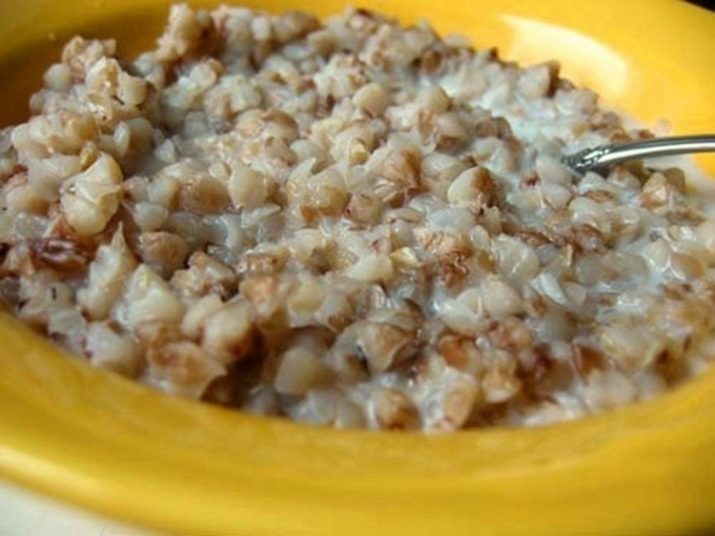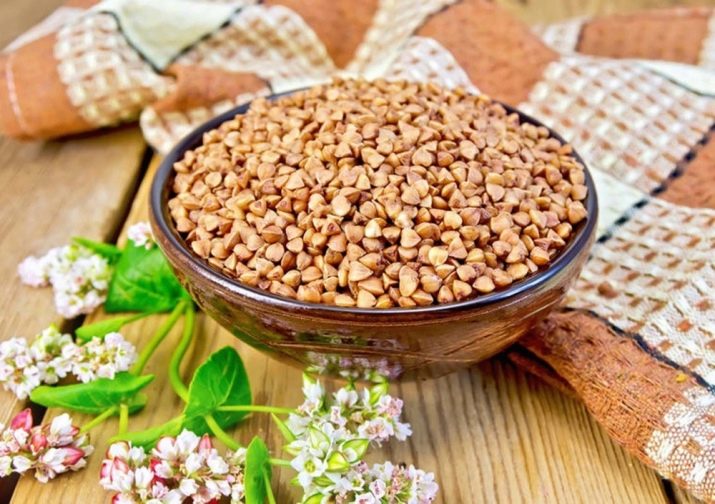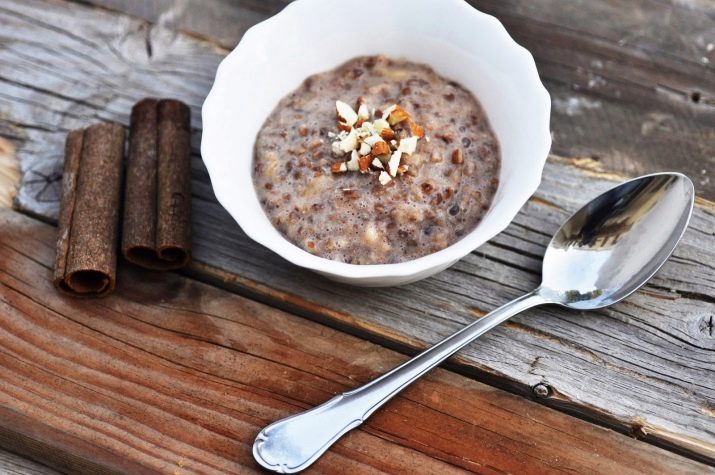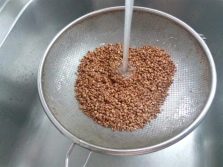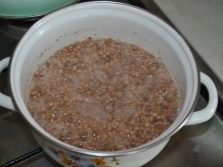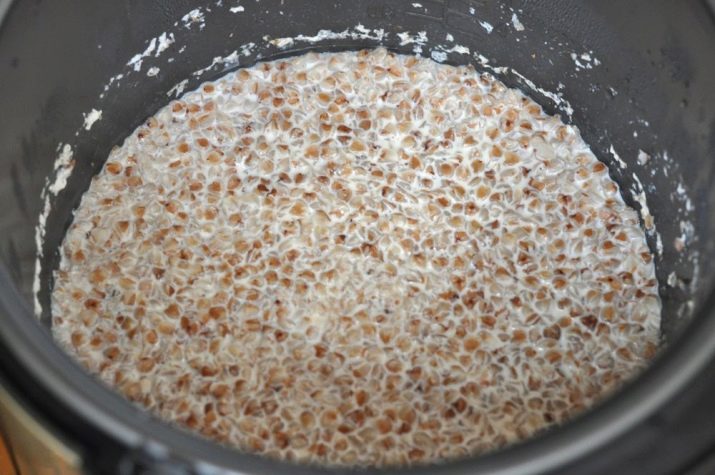Buckwheat Porridge Recipes

Buckwheat is perhaps the most popular cereal in any family where there are small children. It is a source of complex carbohydrates, necessary for any person who monitors their health.This porridge is boiled in broth and milk, served with meat or mushrooms, as a side dish and as an independent dish. However, the greatest benefit to the body brings the simplest buckwheat, boiled in ordinary water. And in order to make it even more tasty, you only need to learn the right recipe and practice a couple of times.
The benefits of buckwheat
Buckwheat cereal grains are the fruits of the plant from the buckwheat family. For the first time, this grass began to be grown for use in food on the Indian subcontinent several thousand years ago. This porridge got its Russian name for being brought to our country from Greece.
The nutritional value of this ancient cereal is about 308 kcal per 100 g of finished porridge. This volume contains about 58 grams of carbohydrates, as much as 13 grams of vegetable proteins and only 4 grams of fat. In addition, this cereal contains up to 11 g of dietary fiber, useful for the digestion of both a child and an adult.
The vitamin-mineral composition of the buckwheat fruit is as rich as its benefit. It includes saturated and unsaturated fatty acids, di- and monosaccharides, vitamins of groups B, E, A and vitamin PP, amino acids and minerals. Calcium, sodium, iron, oxalic acid, lysine, phosphorus, citric acid, copper, argin - all this contains even the smallest buckwheat kernel.
Buckwheat is useful in diabetes, diseases of the cardiovascular system and high cholesterol. It is the basis of any diet, as well as a restoring diet after long and heavy loads or diseases. Buckwheat porridge removes excess fluid from the body, relieves swelling and helps in the fight against obesity. Due to the high fiber content (compared to other cereals), it helps in cleansing the liver and intestines, removes toxins and slags from the body. It is prepared for acute gastrointestinal disorders.
Especially good for stomach cramps buckwheat. Due to its viscous consistency, it envelops the stomach walls and reduces pain.
Features of cereals
There are several types of buckwheat.
- Unground buckwheat - This is a classic buckwheat kernels. They have a brown color with different shades, not fragmented and not divided into parts.
- Breaking - grains, split into large pieces.
- Smolensk groats - grinded practically into crumb
- Green - Untreated temperature effects of buckwheat.
Such croup can be stored for a long time, since it contains phenolic compounds having antioxidant properties. Due to this, the product does not gorknet and does not become covered with mold, it keeps its taste fresh for a long time.
Proportions
Squash is the consistency of the dish, similar to sparse sour cream. Such porridge should sluggishly slip from the spoon, feeling like kissel or oatmeal. It is much easier to cook it than loose grains of buckwheat. The main thing - to comply with certain proportions. The easiest thing to remember is the single rule: the liquid in such a dish should be 4 times more than the cereal.
In this case, the liquid can be any. You can use water, broth, milk and even low-fat cream. You can make a mess of sweet, adding sugar, honey or jam. The only difference is that sugar is poured into the dish during cooking, but honey or jam - in the ready-made dish.
If desired, you can fill the porridge with salt and pepper, although this dish will be very specific.
Cooking nuances
Classic cooking is considered to be buckwheat-smear in a small saucepan or pot, but today many new dishes and kitchen accessories have already appeared, so the recipes are changing.
In the pan
To get a delicious buckwheat-smash the right consistency, you must follow the step by step algorithm.
- The kernel must be sorted out on a table or cutting board. All rubbish, husks and black grains should be removed. If bugs or midges are found in the croup, it cannot be used as food.
- Squatted buckwheat should be washed in cold water 2-3 times, let the excess fluid drain.
- To enhance the taste, you can lightly dry the cereal in a dry frying pan. However, baked buckwheat loses up to half of its beneficial properties, so it is worth choosing which is more important: the taste or the good of the finished dish.
- Washed and dried Zadrica should be poured into a deep pan and cover with water (milk, broth) in a ratio of 1: 4. The dish can be sweetened or salt, put on a strong fire.
- After boiling, cover the pan with a lid and turn down the heat, setting the average. The product is boiled for about 3-4 minutes.
- Then it is necessary to turn down the heat to the very minimum and, without removing the lid from the pan, cook the dish until cooked for about 10-15 minutes.
In the finished dish, you can add a small piece of butter. This will give a more saturated milky taste and aroma. You can put in your favorite nuts, pieces of fruit or even ham, cut into small pieces.
In the slow cooker
Those who want to get a fragrant hot breakfast, just getting out of bed, can cook a mash from buckwheat in a slow cooker. To do this, in the evening you need to perform a certain sequence of actions.
- Enumerated, washed and dried buckwheat need to fall asleep in a slow cooker and pour a large volume of hot water for 1.5-2 hours. This will allow it to swell slightly and soften.
- After this time, a small amount of liquid is additionally poured into the increased volume of buckwheat so that it is covered with it by 1-1.5 cm.
- On the kitchen machine exhibited mode "milk porridge." Buckwheat is boiled for about 20-30 minutes. Periodically, it must be opened and stirred so that the bottom layer does not stick to the bottom of the bowl.
- The finished porridge remains in the slow cooker until the morning. By car, set the time to which it warms up the dish.
This porridge will be slightly less fragrant than cooked in a pot or pan. Nevertheless, it is very convenient for those who want to start their morning with proper nutrition, but does not have the opportunity to do the cooking before work or school.
Depending on the variety and the processing of buckwheat, the 1: 4 ratio may vary both upwards and downwards. This can only be verified by experiment. When boiling for the first time, it is better to take less water, because you can add regular boiling water at any time to half-cooked mash, unlike crumbly buckwheat. It does not worsen its taste. Eating this dish can be both for breakfast and for lunch or dinner.
In order to enhance the benefits of buckwheat, it can be supplemented with lean meat or white fish, make vegetable salad with it, or simply cut the vegetables into large slices and add to the porridge. All family members will appreciate this combination and be sure to ask for supplements.
See how to make buckwheat porridge, see the next video.

